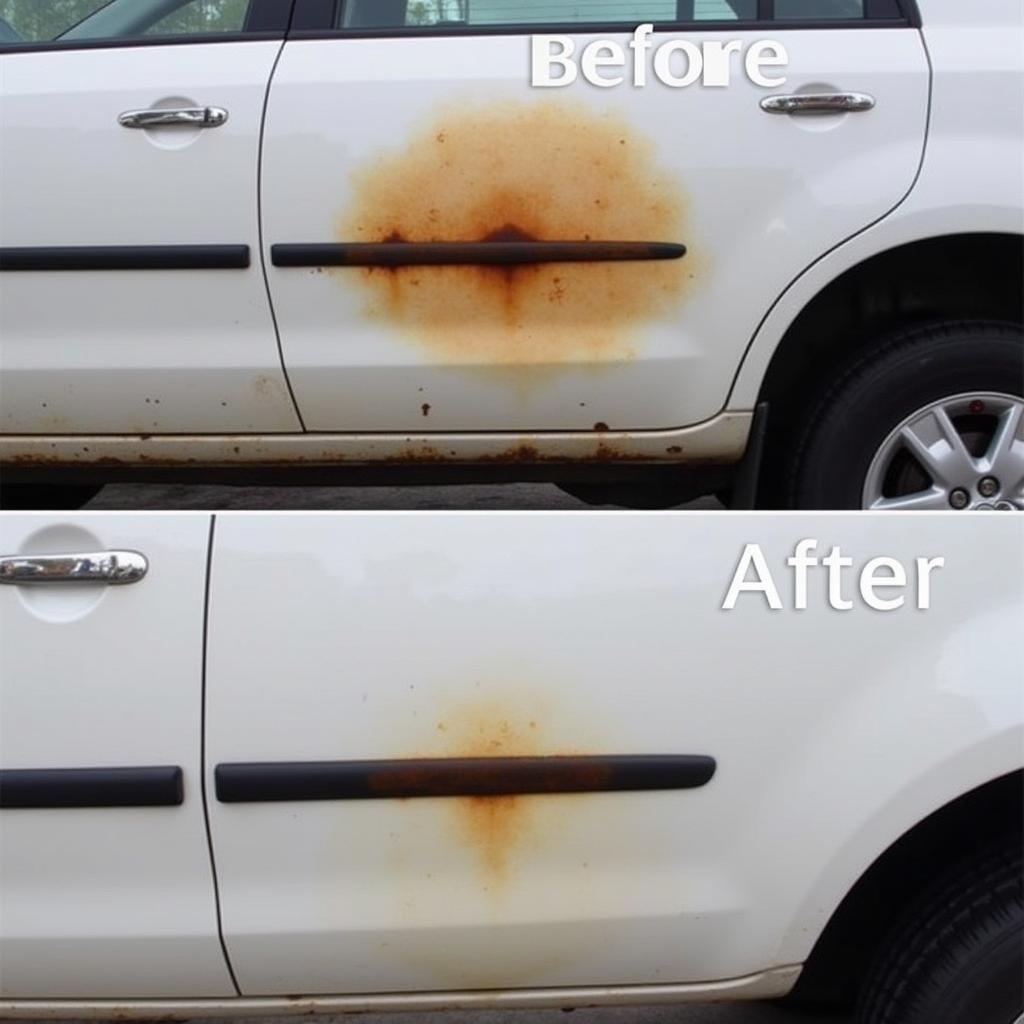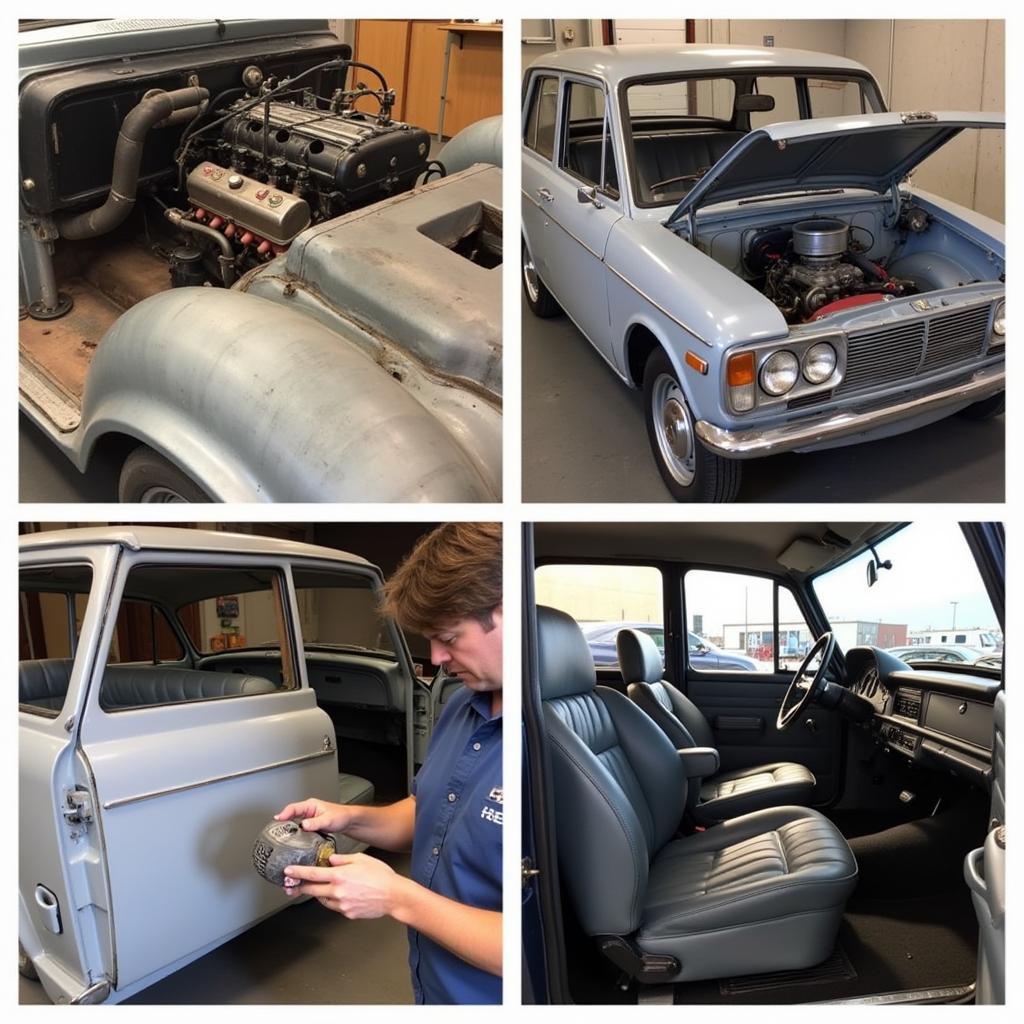Can I fix a car dent myself? This is a common question among car owners facing minor body damage. While DIY dent repair can be tempting, it’s crucial to understand the nuances involved to avoid further damage or unsatisfactory results. This guide provides a comprehensive overview of DIY car dent repair, addressing various aspects from assessing the damage to choosing the right tools and techniques.
Assessing the Dent: Know Your Enemy
Before you even think about grabbing a plunger, you need to assess the dent. Is it a small ding, a large crease, or a sharp dent with paint damage? The size, depth, and location of the dent will determine whether DIY repair is feasible. Shallow dents on flat surfaces are generally good candidates for DIY fixes. However, deep dents, dents on curved panels, or those with accompanying paint damage are often best left to professionals. Knowing the nature of the dent is the first step to a successful repair.
Is the dent on a body line? This can significantly complicate the repair process. Body lines are crucial for the car’s structural integrity and aesthetics, and attempting DIY repairs on these areas can easily lead to uneven surfaces or further damage. If the dent involves a body line, consulting a professional is highly recommended.
DIY Dent Repair Tools and Techniques
Several methods can be used for DIY car dent repair, depending on the dent’s nature. These include:
- Suction cup dent pullers: These work well on small, shallow dents.
- Glue pulling: Similar to suction cups, glue pulling uses adhesive tabs and a slide hammer to pull out the dent.
- Hot glue and popsicle stick method: This method is suitable for very small dents and relies on the adhesive properties of hot glue.
- Dry ice: The rapid temperature change can sometimes pop out small dents.
Remember to exercise caution when using any of these tools. Incorrect application can exacerbate the damage or scratch your car’s paint. How to fix a broken cigarette lighter in a car can be found here if you have issues with your cigarette lighter.
When to Call a Professional
While DIY dent repair can be a cost-effective solution for minor dents, certain situations warrant professional intervention. These include:
- Deep dents: Deep dents often involve underlying structural damage, requiring professional tools and expertise.
- Dents on curved panels: The complex curves of car panels make DIY repair challenging and may result in uneven surfaces.
- Paint damage: If the dent has cracked or chipped the paint, professional repair is necessary to prevent rust and maintain the car’s appearance.
- Dents on body lines: As mentioned earlier, attempting to repair dents on body lines can compromise the car’s structural integrity.
Can I Fix a Car Dent Myself? The Verdict
So, can you fix a car dent yourself? The answer depends on the dent’s severity and your comfort level with DIY repairs. For small, shallow dents on flat surfaces, DIY methods can be effective. However, for more complex dents or those involving paint or structural damage, seeking professional help is essential. Fix broken cigarette lighter car issues easily with this guide. If your car cigarette lighter is broken, check this guide on how to fix broken cigarette lighter socket in car.
Conclusion
DIY dent repair can be a viable option for minor dents, saving you time and money. However, it’s essential to assess the damage accurately and choose the appropriate repair method. If you are unsure or dealing with a complex dent, consulting a professional is always the best course of action. Don’t hesitate to contact us at AutoTipPro for expert advice or assistance with your car repair needs. How do you fix a broken car cigarette lighter? Find out here.
Phone: +1 (641) 206-8880
Office: 500 N St Mary’s St, San Antonio, TX 78205, United States.
FAQ
- What’s the easiest way to fix a small dent in a car? Suction cup dent pullers are often the easiest method for small, shallow dents.
- Can I use boiling water to fix a dent? While boiling water can sometimes work on plastic bumpers, it is generally ineffective and potentially damaging to metal car panels.
- How much does professional dent repair cost? The cost varies depending on the dent’s severity and the car’s make and model.
- Will insurance cover dent repair? It depends on your insurance policy and the cause of the dent.
- Can I use a hairdryer to fix a dent? The hairdryer method, combined with compressed air, can sometimes work for minor dents on plastic bumpers. However, it is not suitable for metal panels.
- How do I prevent dents in my car? Park carefully, avoid door dings, and consider protective films or coatings.
- What’s the difference between paintless dent repair (PDR) and traditional dent repair? PDR uses specialized tools to massage the dent from behind the panel without affecting the paint, while traditional repair involves filling, sanding, and repainting.







Leave a Reply